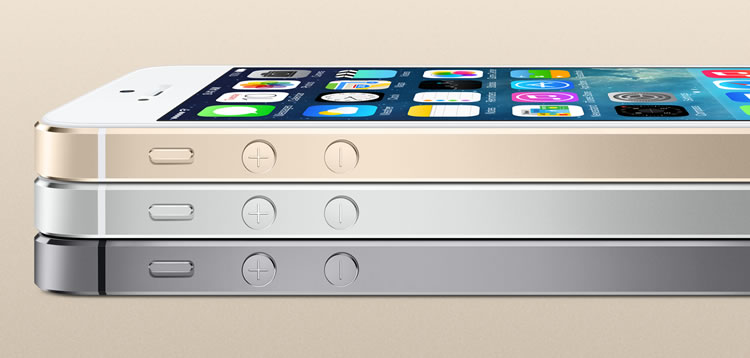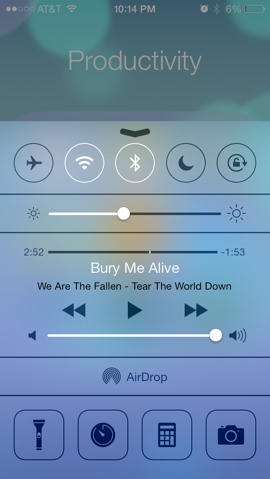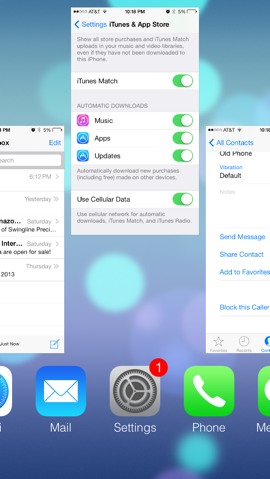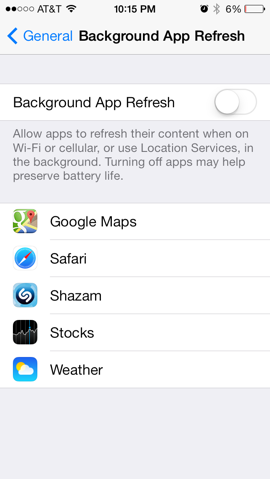iOS 7, Software and Performance
A revamped operating system is one of the iPhone 5s' key features, although iOS 7 is also available for previous iPhone models, the release was set to coincide with the debut of the new 5s and 5c handsets.
Typically I'd spend a good deal of time talking about a software release on the magnitude of iOS 7, but in the wake of our just-published article on the subject, it would all be a bit repetitive.
If you haven't already read through the article, it's certainly worth taking a look at as I dissect the most significant improvements Apple got right with iOS 7 and others that I feel are still missing in the mobile OS.
Performance
Apple has traditionally been able to remain at or very near the top of the pack in terms of sheer processing power compared to other handsets. It's really a testament to Cupertino when you consider they're regularly up against highly-clocked quad-core phones with loads of RAM. Case in point, the Galaxy Note 3 ships with a 2.3GHz quad-core Snapdragon 800 processor and 3GB of RAM while the chip in the iPhone 5s is a dual-core model clocked at 1.27GHz operating with just 1GB of RAM.
Synthetic benchmarks show the iPhone 5s can keep up with or top the Snapdragon 800 and Nvidia's Tegra 4 processor, dual-core and all. But that's only half the story as the A7 processor in the 5s is the first 64-bit chip to find a home in a mobile device.
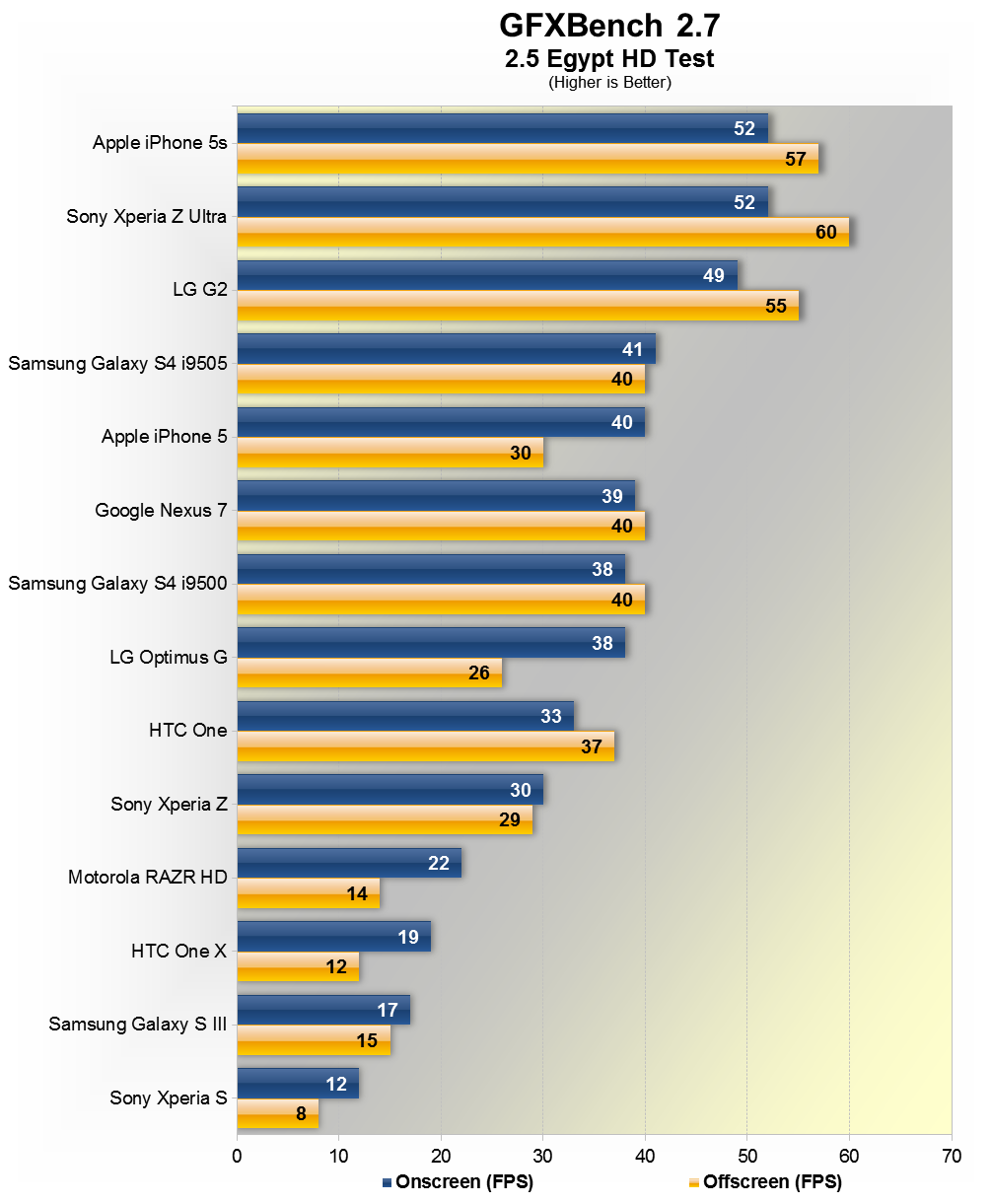
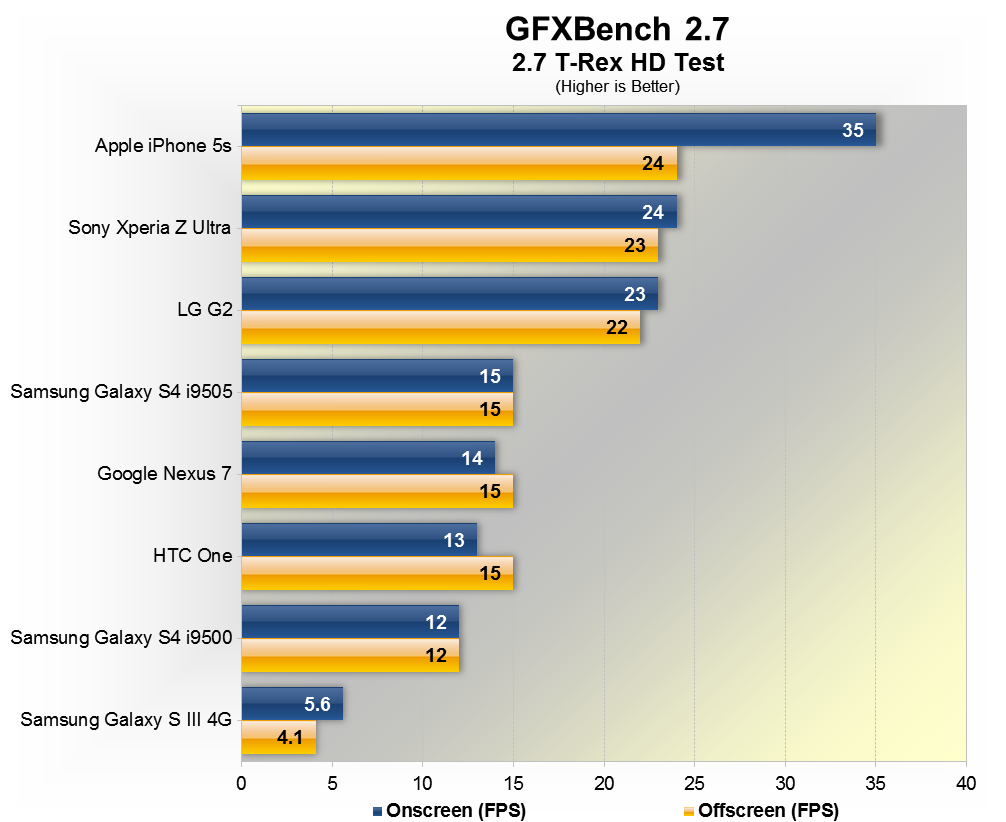
It'll likely be a while before Apple ships a phone with more than 4GB of RAM, so the ability to use more system memory is a non-issue. 64-bit apps are expected to perform better and consume less power in due time but as of writing, it doesn't really translate into a lot. Instead, Apple is laying the groundwork for future devices and next-gen applications.
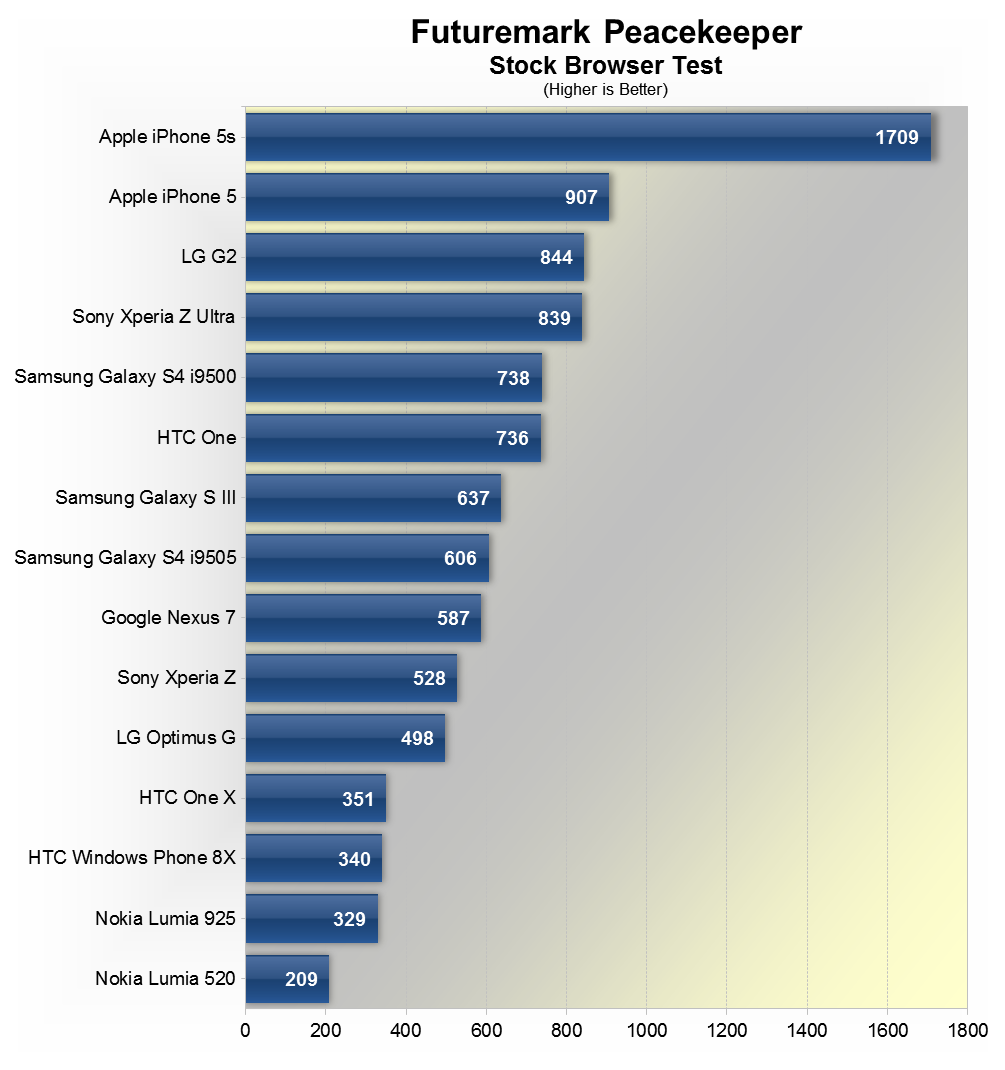
Lending a helping hand to the A7 is a new co-processor known as the M7. It's a dedicated motion tracking chip designed to ease the processing load on the A7 and help preserve battery life. Specifically, it handles data from the gyroscope, accelerometer and compass. It's similar in practice to the X8 architecture used in the recently-released Moto X.
Having said that, I wasn't able to tell much of a difference in terms of general usage speed between the iPhone 5 and 5s. In side-by-side browsing tests over the same Wi-Fi network, both phones were dead even in terms of website load times. Navigating menus in iOS 7 was equally peppy on both smartphones. Games like Infinity Blade III looked impressive with no visible slowdowns, but so too did games on the iPhone 5.
Perhaps it's because I've only stepped up one generation but the 5s just doesn't feel any faster than the 5 before it. That's not a bad thing necessarily as last year's model was plenty quick in its own right but this reinforces the notion that Apple is simply paving the way for software that will come later and take advantage of the 64-bit architecture.


Even though the chassis is the same size as the iPhone 5, Apple managed to squeeze a slightly bigger battery into the 5s - from 1440mAh to 1560mAh, or about eight percent larger. Gauging battery life on a smartphone can be subjective as a number of factors like screen brightness, various usage scenarios, wireless signal strength and other settings all come into play.
I put the phone to the test the first few days I owned it by trying new apps, snapping photos and videos, using Google Maps for GPS, etc. Once usage leveled out, I found I could make it through a typical day with about 20-30 percent battery life remaining. It seemed to outlast the iPhone 5 but not by a substantial margin. It'll be enough to make it through the day with some usage to spare, so no complaints there.
